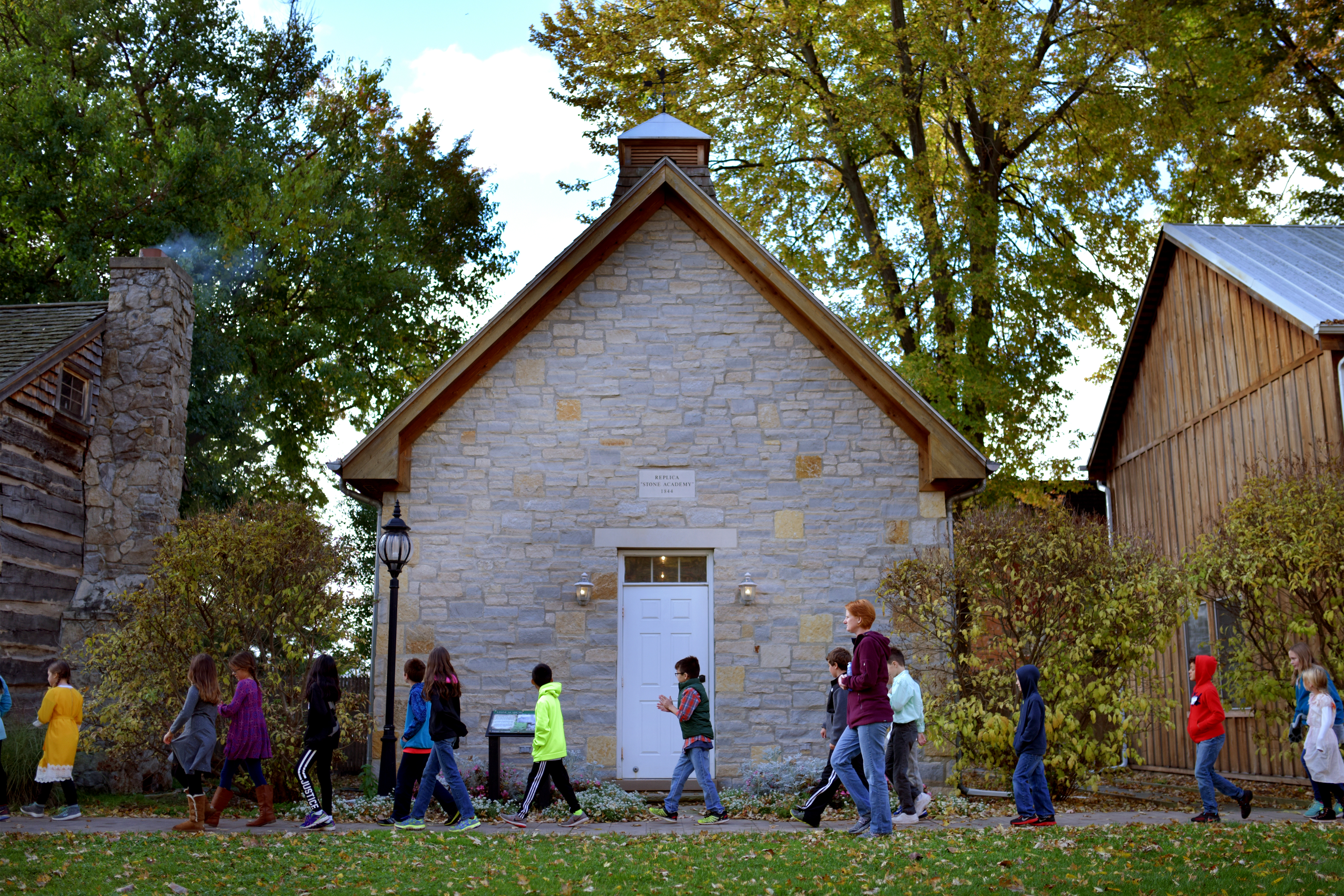In 1995 the City of Sylvania purchased a plot of land with the intent of turning it into the Historical Village.
The first building was received in 1997 and continued to grow until our latest build, the Train Car Barn, constructed in 2008. Everything in the village is either the original building (relocated) or a replica. The Historical Village is a popular site for student field trips from dozens of surrounding schools and groups. Each year, we see about 3,000 students come through our village and experience our Pioneer Program. The Village is open to the public during Downtown Sylvania events and starting in late Spring of 2024, the Historical Village will be open to the public every Sunday.
In order to have the Village open more often, we will need more weekend volunteer help. If you or anyone you know would be interested, please fill out our volunteer form. We give you all the training and knowledge needed.
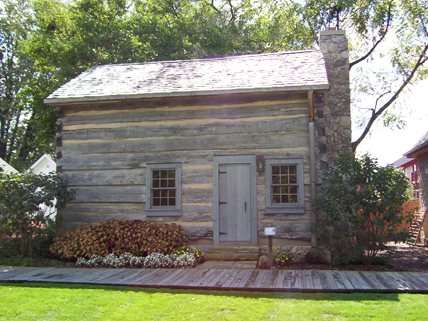
Log Home
This 1840s log home was acquired from a Henry County farm near Weston, Ohio. It was dismantled and brought to its present location in the Historical Village. This log home represents the type of home inhabited by the first Northwest Ohio settlers - a 1½-story home with the family living quarters on the main floor and a sleeping loft above. Costumed interpreters relate how early Sylvania settlers cooked, preserved food, made soap, fabric, clothing and floor coverings, and carried out the routine tasks of daily living.
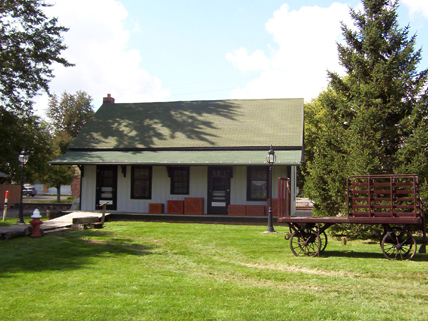
Train Depot
The showpiece of the Historical Village is the original railroad depot building that served Sylvania residents for 98 years, from 1858 to 1956. It is the one of oldest train depots still in existence in Ohio.
From this single small building, Sylvania sent its men to five wars over nearly a century – the Civil War, Spanish-American War, World Wars I & II, and the Korean War.
Built in 1858, the Sylvania Depot was donated by Gene Paul and Jack Newton in 1996 and moved to the Village in March 1997.
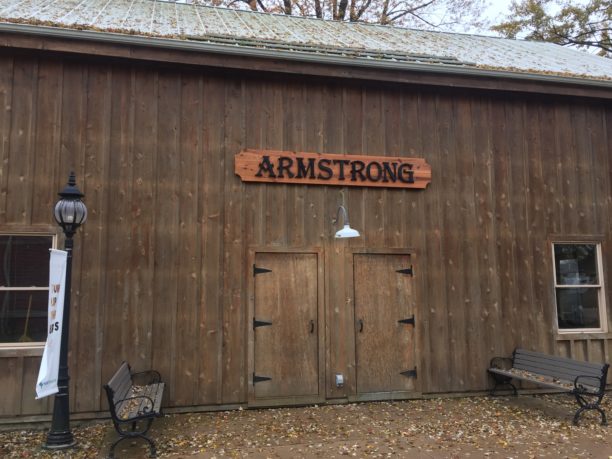
The Armstrong Barn
The Armstrong Barn is a replica of typical large barns found in this area in the mid to late 19th century. Today this building serves many purposes from activity center for school programs, lunch room, special event activity area and more. Inside, you'll find examples of artifacts of both our agricultural and industrial past. On special event days, a blacksmith is often found working at the forge recreating the decorative and functional items common in the pre-industrial age.

Stone Academy
Our Stone Academy replicates the original nineteenth century one-room stone schoolhouse that was located on the same lot as the Village, near Maplewood Avenue and Main Street in Sylvania in 1844. The original Stone Academy served area children from 1844 to 1869. Our replica was built in 2001 and was modeled on a drawing from a centennial history of the City of Sylvania, published in 1933.
Today, costumed interpreters use our Stone Academy to recreate the experience of learning to read, write and “cipher,” or use arithmetic, as the children of Sylvania did in the 1840s.

Train Engine and Caboose
In 2005, we were given a 63-ton 1915 electric locomotive that was built for the Toledo & Western Interurban Railroad at the Baldwin Locomotive Works in Pennsylvania. Working with The Andersons of Maumee, the locomotive was restored and it is on display with a 1924 wood caboose similar to one used by the Toledo, Angola and Western Railroad.
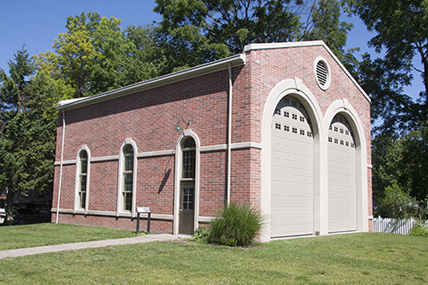
Train Car Barn
After the donation of the Locomotive Engine and Caboose, the Historical Village raised funds to build a structure to preserve them – a replica of the middle two stalls of the Sylvania Interurban “car barn” with tracks to allow the cars to move in and out of the building for viewing and classes.
In 2016, we received a donation to create signage to help our guests understand the importance of the railroad in our region. The Locomotive and the Caboose now find their permanent homes inside the Train Car Barn so that they can be preserved for future generations.
The Historical Village is open most Sundays 1:00pm - 4:00pm, May through mid-November
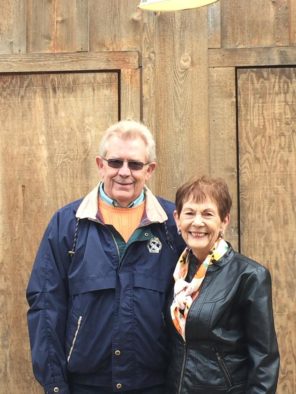
In 1993, the Heritage Center Museum opened to the public for the first time.
At the helm were Robert "Army" and Joy Armstrong. Their commitment to preserving history in Sylvania began in the early 1990's. Army became president of the newly formed Sylvania Historical Society. When the Heritage Center Advisory Commission was formed soon after, Army was on that board and Joy became the volunteer in charge of exhibits, programs, open hours, volunteers, and events. When the Sylvania Historical Village was formed, Joy was hired by the City of Sylvania to be the first Director while Army served on the board and also oversaw the building, restoration, and maintenance of the property. Without their dedication, passion, energy, persistence and countless hours, the Sylvania Historical Village would not exist. During the Fall Festival on Sunday, October 21st, 2018 in front of their family and friends, Mayor Craig A. Stough, on behalf of the Sylvania City Council and the Sylvania Historical Village board of trustees, officially dedicated and renamed the barn the Armstrong Barn in honor of Joy's and Army's everlasting contributions to our community.
Thank you Joy and Army!

